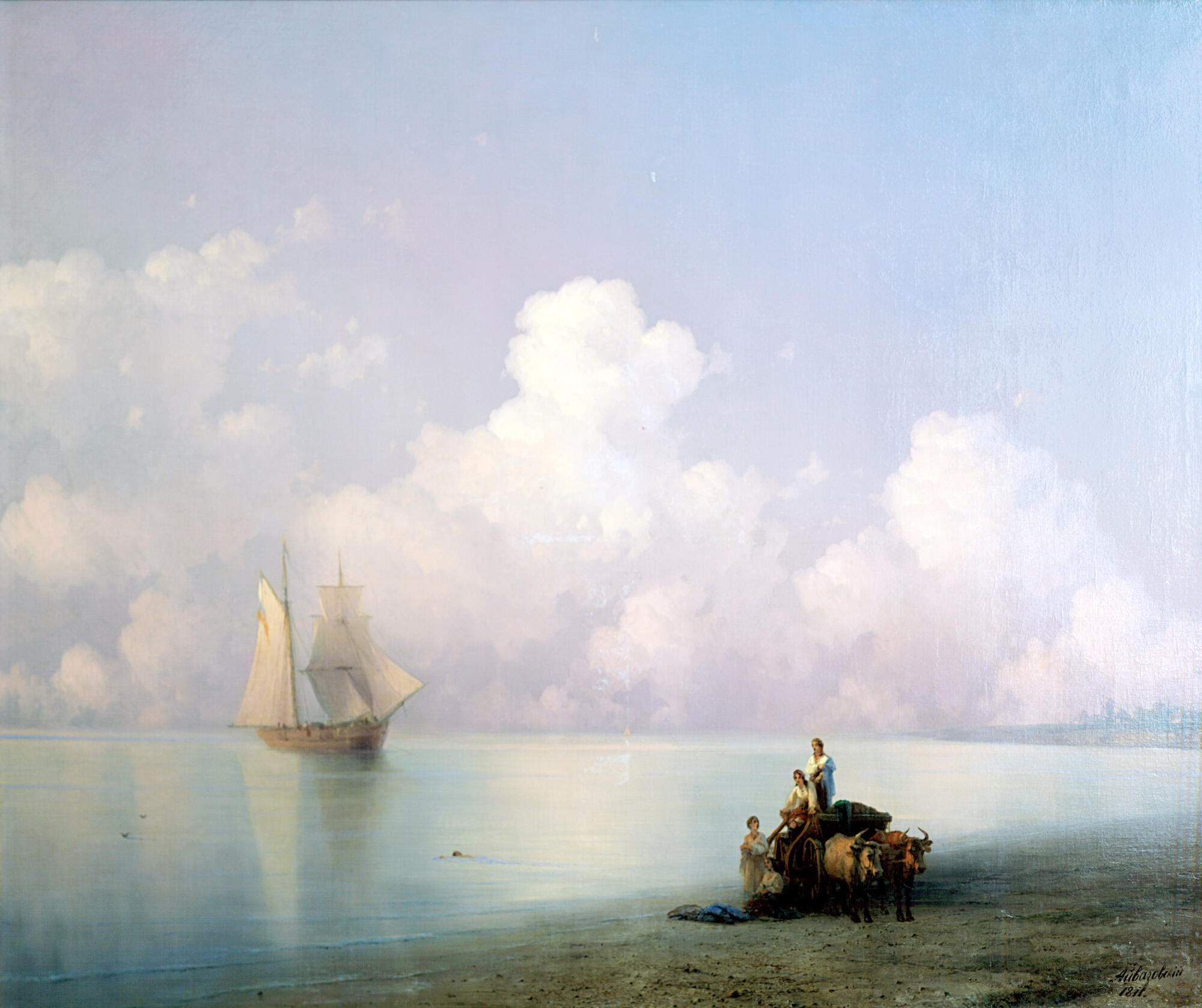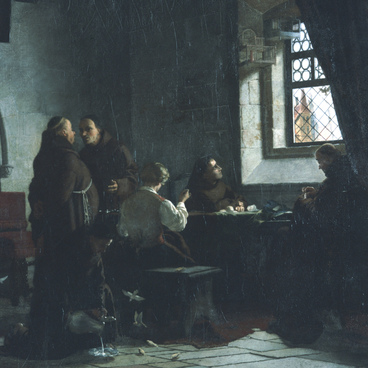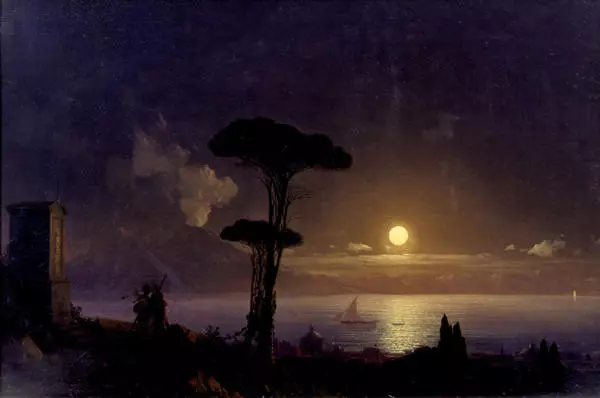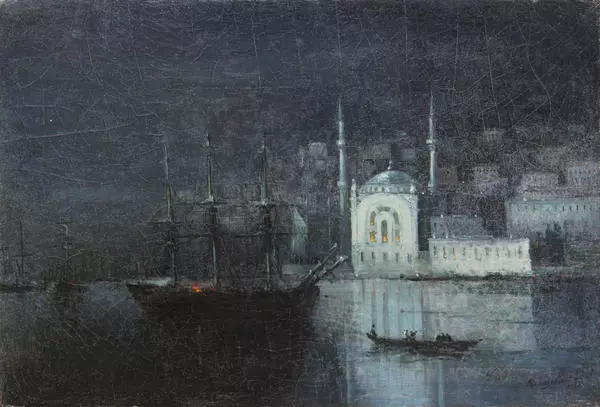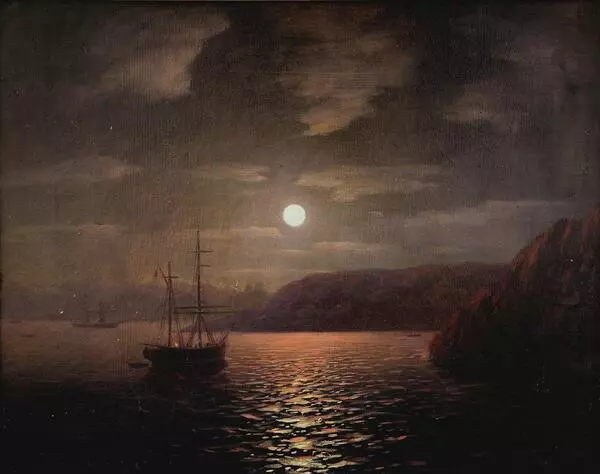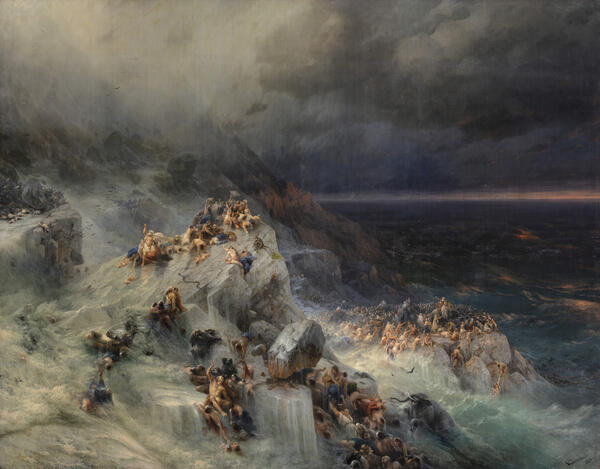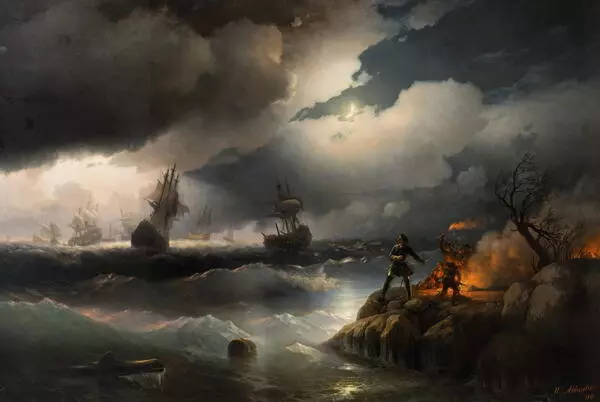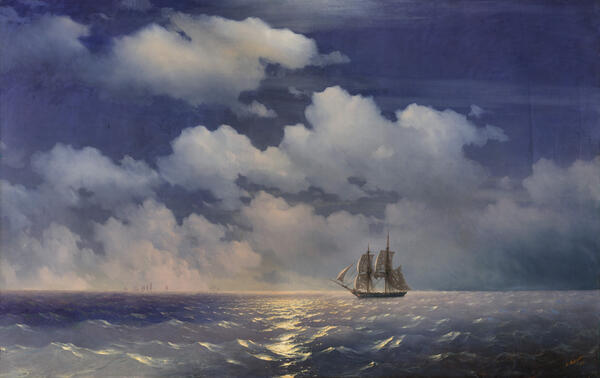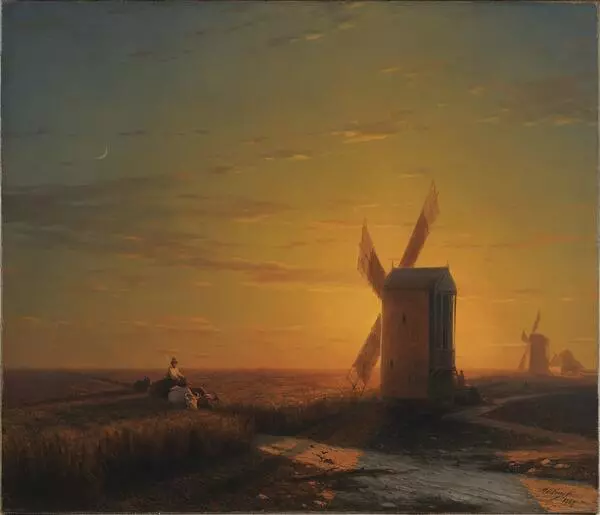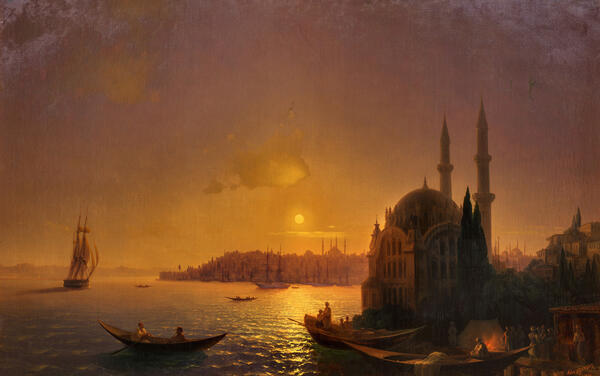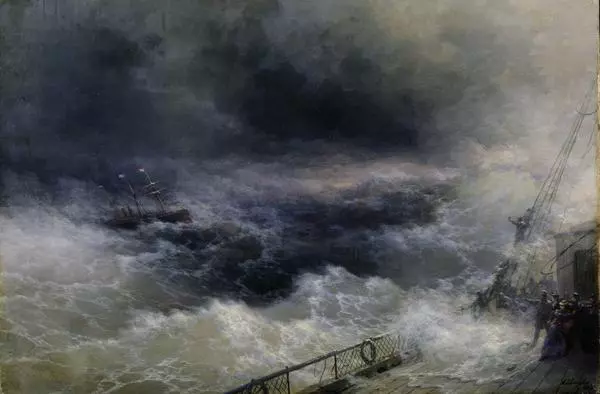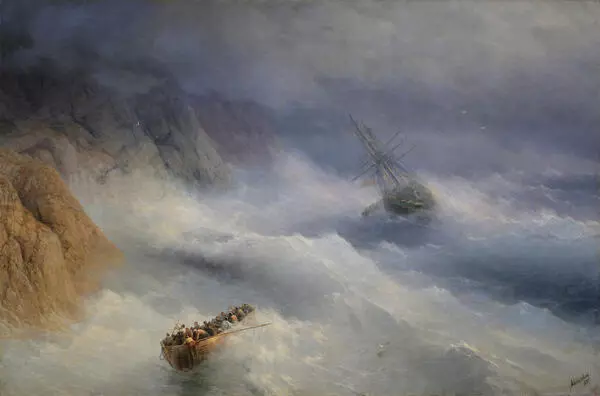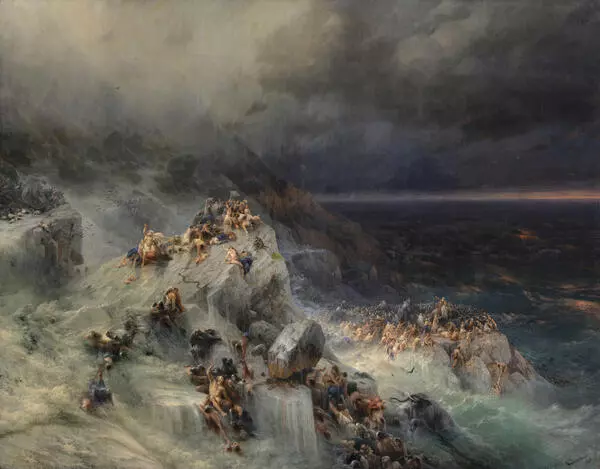The Russian Emperor Nicholas I was quite straightforward when he said, “Whatever Aivazovsky paints — I will buy it.” The painter Ivan Kramskoy called Aivazovsky “a star of the first magnitude in the history of art.” Hovhannes Aivazian was born and raised in Crimea, in the port of Feodosia. The sea was the main theme of his works throughout his life.
The famous “Aivazovsky wave” looked real, moving, permeated with light. This effect was achieved with the help of glazing technique, when thin translucent layers were painted on top of each other creating the illusion of depth. Aivazovsky’s skill of painting in layers and yet in an incredibly free manner resonated with the audience. His contemporaries claimed the artist knew some secret recipe for making paints.
Ivan Aivazovsky was a man of great energy and an eager learner. He personally attended important events and made sketches during the Crimean War, at the launching of Russian Navy ships, and at the opening of the Suez Canal. By the age of thirty, Aivazovsky was a professor at the Academy of Arts, a painter at the Naval General Staff, a member of the academies of Paris, Rome, Amsterdam, Florence, and Stuttgart. Ivan Aivazovsky was awarded ten international orders; he was a member of the Russian Geographical Society, an active privy councilor and the first nobleman in his family.
In his hometown of Feodosia, Ivan Aivazovsky had a water supply system built. The artist opened a painting school and an art gallery. The Crimean airport in Simferopol is named after Ivan Konstantinovich Aivazovsky. During his lifetime, the artist had more than 125 solo exhibitions around the world, and part of the proceeds always went to charity.
Anton Chekhov visited Aivazovsky two years before the artist’s death and left the following observations,
The famous “Aivazovsky wave” looked real, moving, permeated with light. This effect was achieved with the help of glazing technique, when thin translucent layers were painted on top of each other creating the illusion of depth. Aivazovsky’s skill of painting in layers and yet in an incredibly free manner resonated with the audience. His contemporaries claimed the artist knew some secret recipe for making paints.
Ivan Aivazovsky was a man of great energy and an eager learner. He personally attended important events and made sketches during the Crimean War, at the launching of Russian Navy ships, and at the opening of the Suez Canal. By the age of thirty, Aivazovsky was a professor at the Academy of Arts, a painter at the Naval General Staff, a member of the academies of Paris, Rome, Amsterdam, Florence, and Stuttgart. Ivan Aivazovsky was awarded ten international orders; he was a member of the Russian Geographical Society, an active privy councilor and the first nobleman in his family.
In his hometown of Feodosia, Ivan Aivazovsky had a water supply system built. The artist opened a painting school and an art gallery. The Crimean airport in Simferopol is named after Ivan Konstantinovich Aivazovsky. During his lifetime, the artist had more than 125 solo exhibitions around the world, and part of the proceeds always went to charity.
Anton Chekhov visited Aivazovsky two years before the artist’s death and left the following observations,
